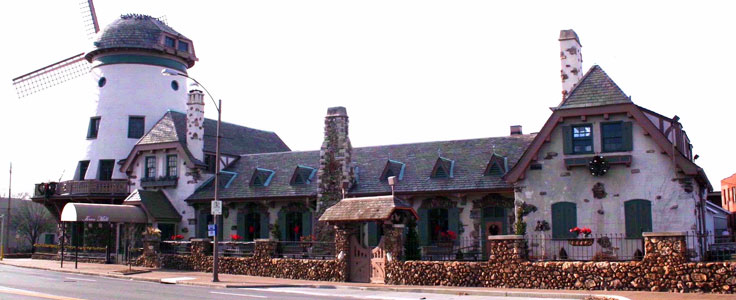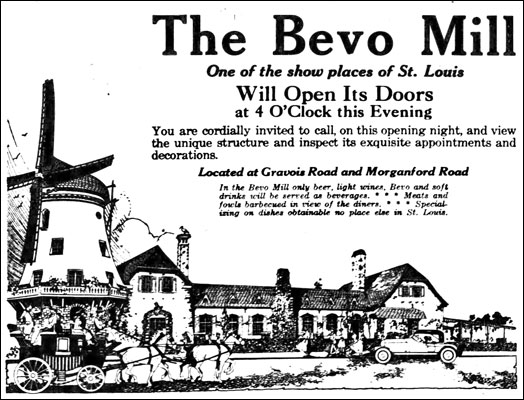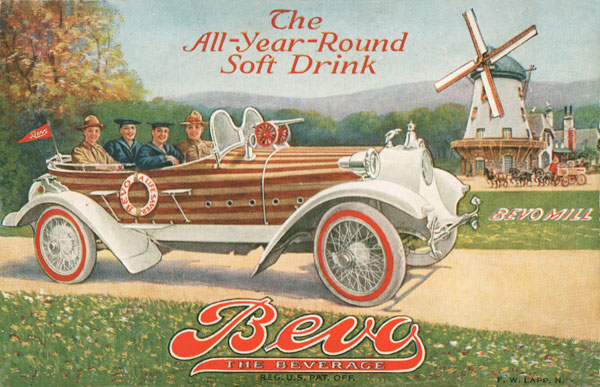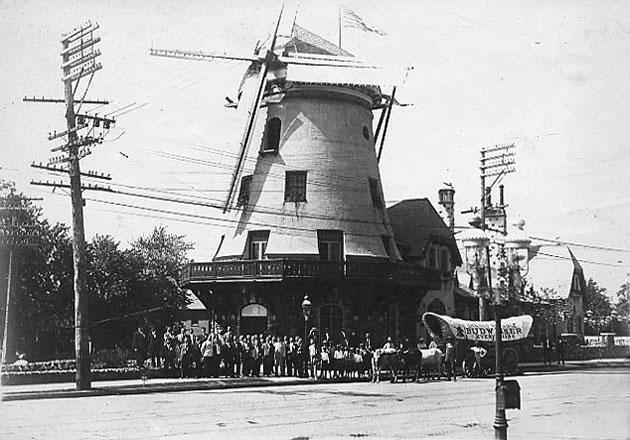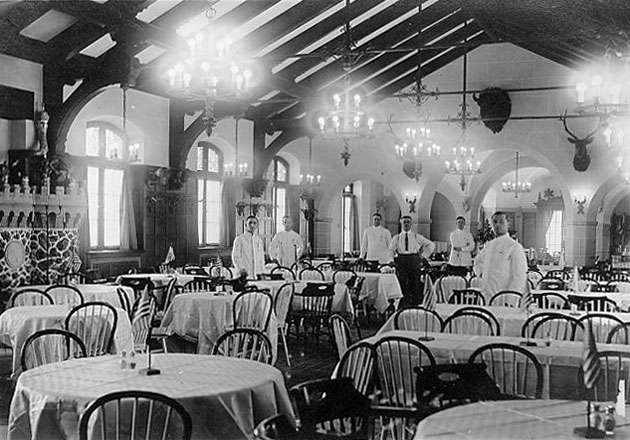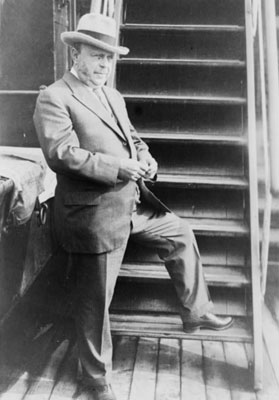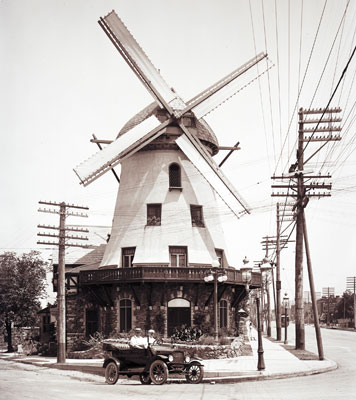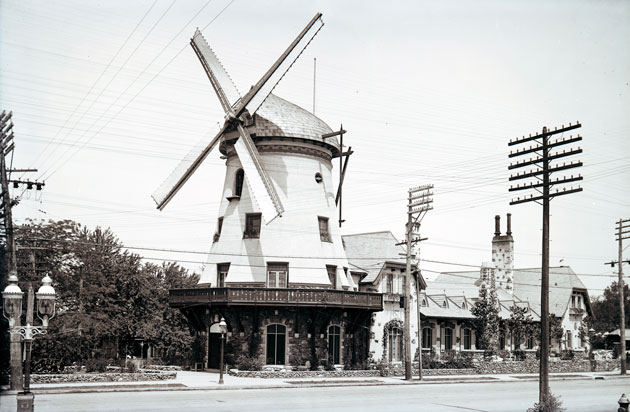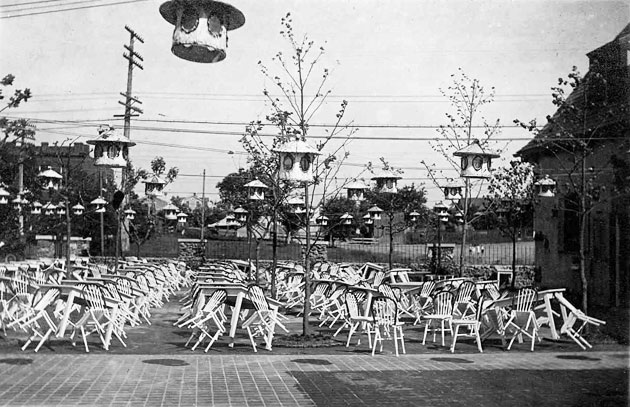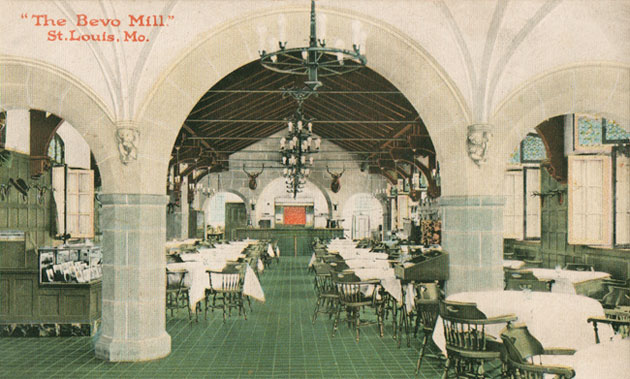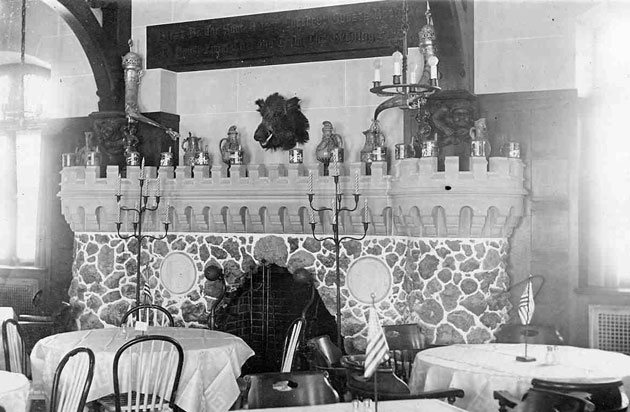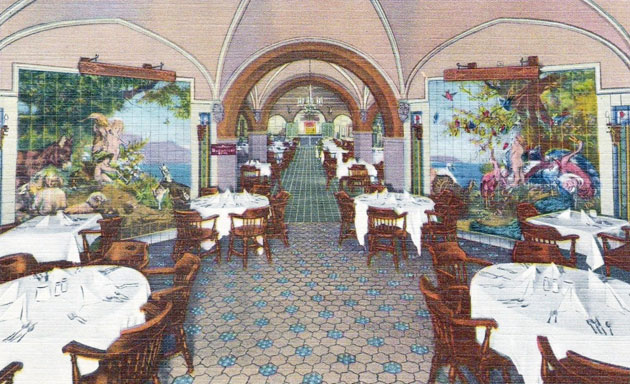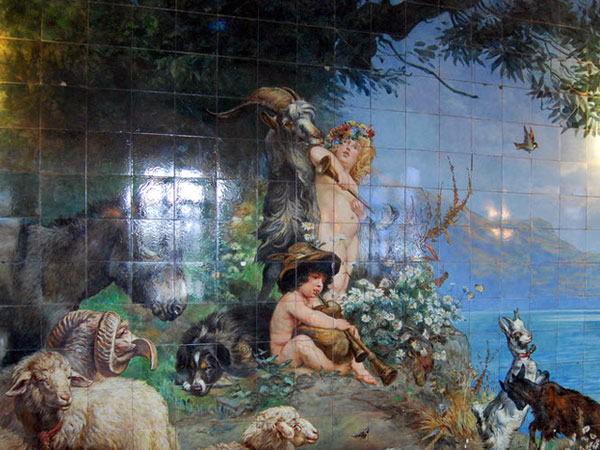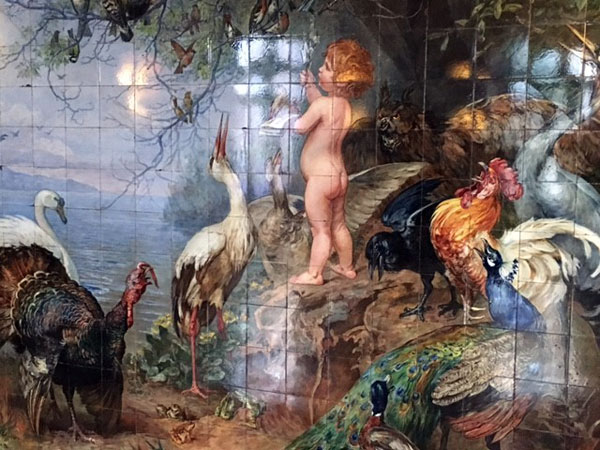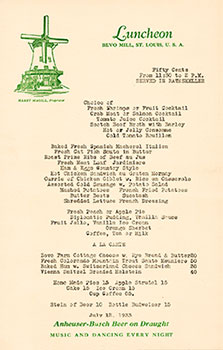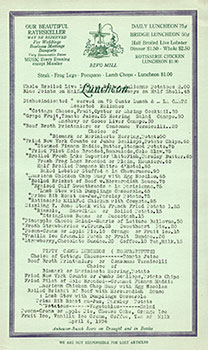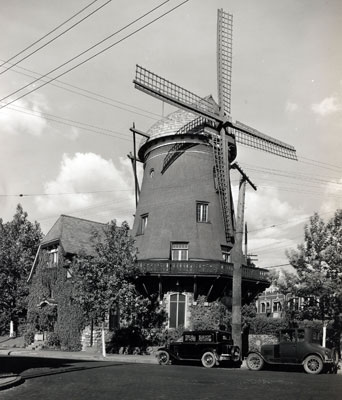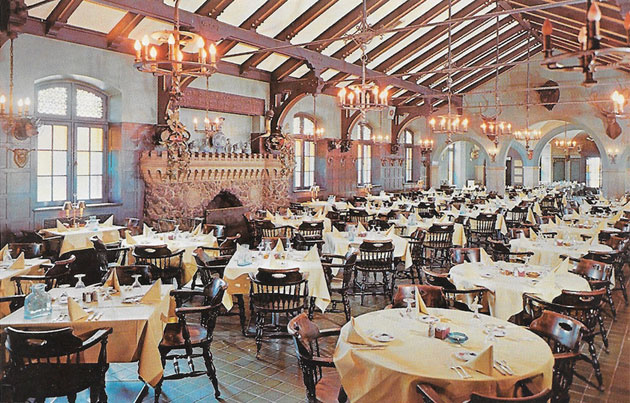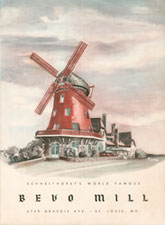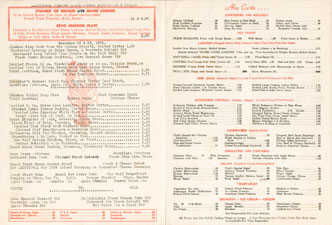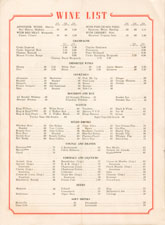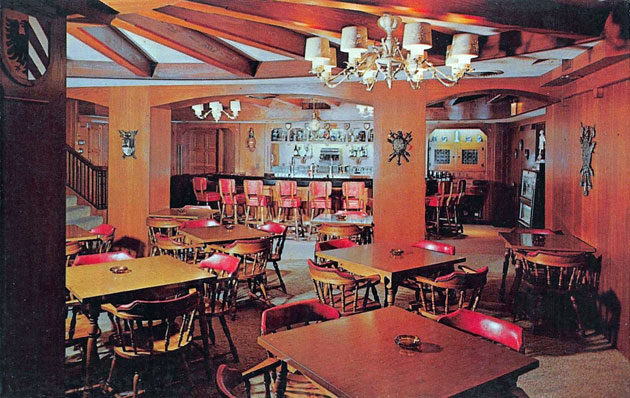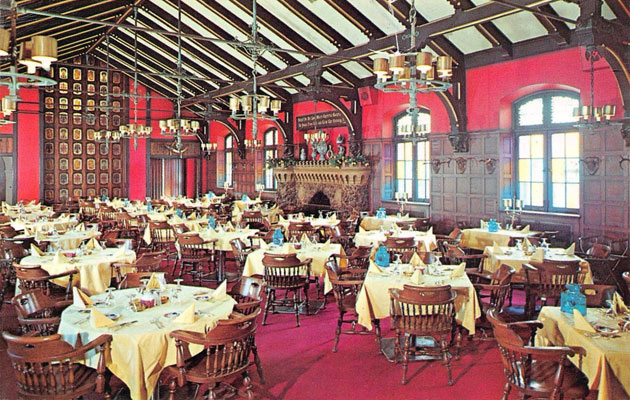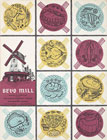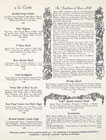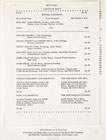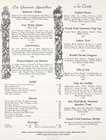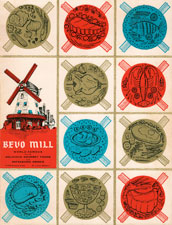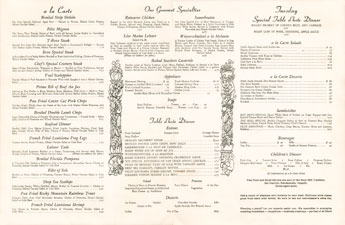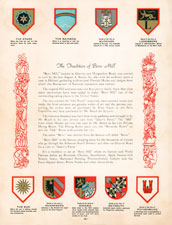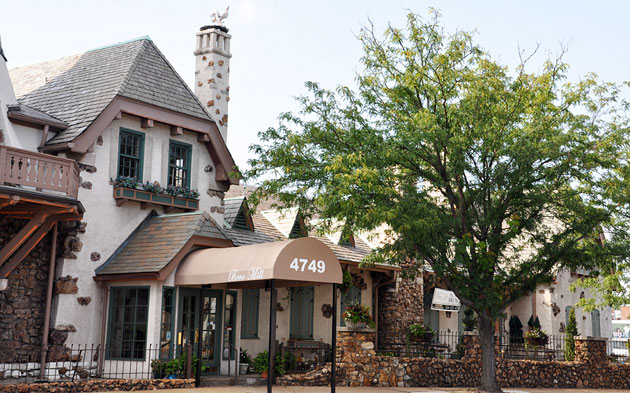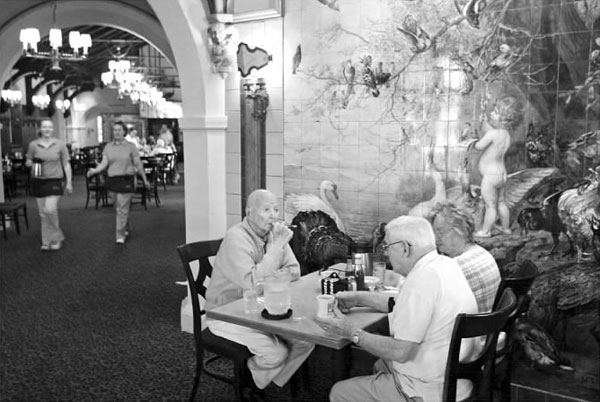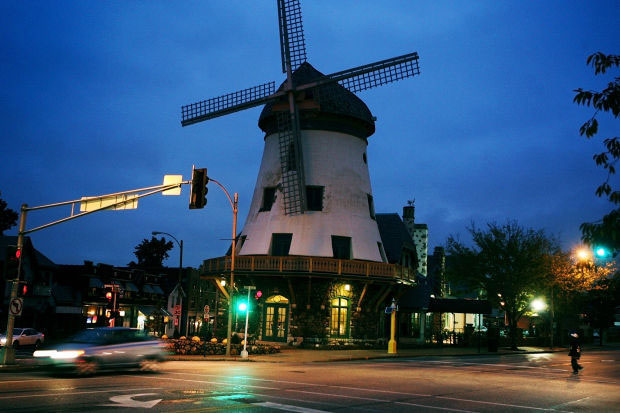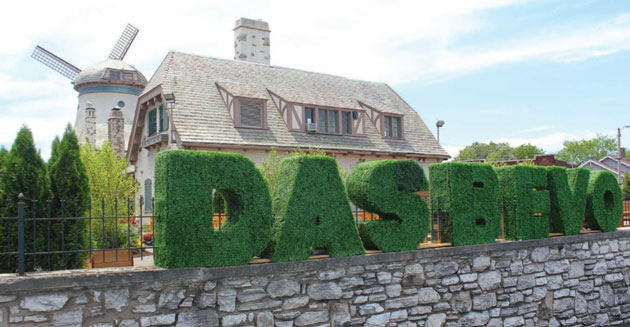|
Bevo Mill In November of 1916, August A. Busch, president and principal owner of Anheuser-Busch Brewing Association, gave an interview that was carried in newspapers throughout the country.
August Busch ended up putting $200,000 into the
Bevo Mill, which was a lot of money at the time. But there was a
method to his madness, as he spent $3,000,000 on a plant to
manufacture the "temperance drink" he would sell there - and
throughout the country. The name of the non-alcoholic malt beverage
was Bevo, coined from the Slavic word for beer, pivo. Busch
named his "German saloon" at Gravois and Morganford for his new
libation.
Anheuser-Busch started brewing Bevo when
alcoholic beverages were prohibited in 1916 by the United States
armed forces. Production rose greatly with national prohibition in
1919, and Bevo was by far the most popular of the many "cereal
beverages" or "near beers" of the time. At the peak of its
popularity in the early 1920s, more than five million cases of Bevo
were sold annually.
The Bevo Mill opened on Tuesday, June 19, 1917, and by that Saturday was in full swing, as recounted in the St. Louis Post-Dispatch.
It was Adolphus Busch, founder of the brewery, who first dreamed of a family-style restaurant in the shape of an authentic Dutch mill, but he died in 1913, before plans for the structure were drawn up. After his death, his son August Busch traveled to the Netherlands for a year, touring mills with an architect and collecting artifacts. He was intent on recreating the German family garden system where beer and light wines were served outdoors in an atmosphere of music and dancing, with an abundance of fine food available. In 1916, construction on the building began on the former site of a blacksmith shop. At the time, the area was considered an outlying part of the city. It was said the site was chosen because it was midway between the Anheuser-Busch brewery and Grant's Farm, the Busch estate. It became a stopping place for members of the Busch family, who used the restaurant as a private club the first year it was open.
Busch took a keen interest in the
construction
of the restaurant. The base of the mill tower was made of stones of
various shapes and colors, chosen by Busch himself from the grounds
at Grant's Farm. A stucco finish covered the tower above the stone
base, and a wooden observation deck encircled the tower. A Dutch mill expert was brought in to start up the original wooden blades of the windmill, which were 60 feet in diameter and painted bright orange. The blades were driven by a 24-inch-thick shaft extending through a marble bearing.
The exterior walls of the restaurant were of
the same stone as the mill tower. Originally, an outdoor garden, lit
by birch-bark lanterns, lay north of the mill tower. An eight-room
apartment was built into the second and third stories of the tower
as living quarters for the manager, with laundry facilities and
storage space provided on the fourth floor.
Inside, the restaurant consisted of the octagonal Mill Room, so named because it was in the mill tower, the main dining room and an auxiliary dining room on the lower level.
In the main dining room, hand-carved
wooden gnomes, bought by the Busch family at the Paris Exposition of
1898, supported arches that extend to the beamed ceiling. The room
was fitted with large windows set in a 7-foot oak wainscoting and
Caen stone walls. A large fireplace made of stones from Grant's Farm
graced the east wall, with an open rotisserie for roasting chickens
against the northernmost wall. Boar and deer heads and Bavarian
steins decorated the room.
Busch initially used the Mill Room as his
private dining room. The octagonal room housed two murals, each 8 feet 3
inches wide by 8 feet 5 inches high, made of painted porcelain
tiles. The murals, both pastoral scenes, were created at the Berlin
Porcelain Works, dated 1890 and 1891, and signed by artist Paul Meyerheim and German painters Gustav Kreibich, Walter Soltz and Zamb
Filfon. The murals were originally purchased by restaurateur Tony
Faust and exhibited in his restaurant. He subsequently sold them to
Busch for $50,000.
One mural showed two plump, naked children
surrounded by animals in a pastoral setting of wildflowers and
greenery. During the installation, one tile was accidentally placed
upside down, an error that added an odd twist to the shape of the
cirrus clouds. The other mural showed a child surrounded by a
peacock, a turkey, a rooster and other birds.
Carl Henry Dietz spent 20 years at Tony Faust's restaurant as chef, steward and owner. Following the closing of Faust's in 1916, August Busch recruited Dietz to serve as manager of Bevo Mill. He accepted the position, taking several of the old Faust employees with him. Dietz, who never lost his interest in expert cookery, made Bevo Mill known as a place to get good food and efficient service. In 1920, he acquired the business, Anheuser-Busch retained title to the real estate. Ill health caused his retirement in 1931. Elmer Telchorst and then Harry A. Magill operated the Mill until 1939.
In 1939, Arthur B. Schneithorst signed a
10-year lease with Anheuser-Busch to manage the Bevo Mill. The
completely renovated and air conditioned restaurant reopened for
business on July 26, 1939.
The dignified air of a Flemish hunting lodge
was preserved in the main dining room, which was refinished in
lighter tones and renamed the Holland Dining Room. A new cocktail
lounge, known as the Yacht Club, was added in the basement,
decorated in nautical style.
After her husband's death
in 1947, Bertha Schneithorst became manager
of the Bevo Mill. When the Schneithorsts took over the
restaurant in 1939, the original wooden windmill blades had been
removed, having been declared a hazard. In the early 1950s,
Arthur Schneithorst Jr. convinced his mother the windmill looked
unfinished without its blades. They had aluminum blades
fabricated and installed in 1954. When the new blades were
started up, they turned the wrong way until a customer reported
the mistake. In July of 1959, the Schneithorst corporation sold the Bevo Mill after operating the restaurant for 20 years. Arthur Schneithorst Jr. said his mother's retirement had been a factor leading to the sale. The Bevo Mill was sold to Collins Enterprises. The sale covered fixtures and equipment. A five-year lease had been negotiated with Anheuser-Busch, still the building's owner. Walter Collins, president of the corporation, took over management of the restaurant.
Collins remodeled the
nautical-motif Yacht Club basement bar in 1961 into the warmer
looking, carpeted and paneled Bavarian Room. The room was decorated
with crests of the principal cities of Bavaria and featured a small
stage for musicians. The Oak Room, a large private dining and party
room, was created behind the Bavarian Room.
Collins also remodeled
the Bevo Mill's main dining room, complete with red carpet and red
walls.
The Bevo Mill's years under Collins witnessed a high point in its popularity. Collins continued the personal touch that had endeared the restaurant to its many patrons over the years. Collins made it a practice to shake hands and chat with patrons at their tables.
"It was like a little club. Everybody who came
in knew everybody," said Steve Paur, who began busing tables in 1969
at age 16 and then worked as a waiter, bartender and was assistant
manager when he left in 1980. At lunch hour in the Bavarian Room, Collins regularly bused tables "so I could be with people to shoot the breeze" and also worked in the kitchen "to make sure everything was right." On busy weekend nights, he greeted guests and changed tablecloths.
"I guess it was the building
itself," Collins said that made the Bevo Mill a place to go to
relax, knowing there was a good chance one would meet friends.
"There was such a relationship of real love, you could almost call
it. What kept Tony [the restaurant's maître d'] and Eleanor and all
the waitresses was a feeling of devotion to the institution, not
necessarily to the management itself. A few had been there all their
lives. They wouldn't think of working anywhere else. It was so much
of their lives." During the last year Collins managed the Bevo Mill, he was unable to be at the restaurant each night, as was his practice, because his wife was ill. As a result, customers and employees said the restaurant's operation began to decline. In 1980, radio announcer Jack Buck tried to buy the Bevo Mill, but was unsuccessful. In April of 1982, restaurateur Charles Kym took over management of the restaurant. Customers said the quality of the food was mixed at the Bevo Mill after Kym took over. In his January 20, 1983 review in the St. Louis Post-Dispatch, Joe Pollack said, "Those who look to the Bevo for German cuisine are following a folk legend. The venerable establishment, at 4749 Gravois Road, offers just two German dishes, so it is basically a standard American restaurant." In July of 1984, a broken dishwasher forced Kym to close the Bevo Mill rather than have its grade A rating reduced by the St. Louis Health Department. Kym decided not to reopen the restaurant, and by August of 1984, Anheuser-Busch was looking for a new tenant. Anheuser-Busch gutted the interior of the Bevo Mill and spent $1 million to restore the property. In June of 1985, Patrick Hanon and Ray Gallardo signed a 20 year lease to operate the restaurant.
The Bevo Mill reopened to the public on Monday,
April 21, 1986. There was a party for 200 Anheuser-Busch executives
on Friday evening, April 18. On Saturday, a tasting of the best of
the Bevo Mill's dishes was held for friends of Hanon and Gallardo.
On Sunday, the community was invited to look on as a member of the
Busch family presented the keys to the front door to Hanon and
Gallardo and a button was pressed to turn on the mill. Hanon's
brother, Mark, was pegged to manage the restaurant.
Large white booths now lined the main dining room's center, and the art glass windows with the gnomes had been replaced by frosted panes. Gone also was the live lobster tank that amused generations of children and their parents. The basement bar area, now gray-walled, had been enlarged and took up much of what had been the Oak Room. "We've tried to recreate the same mood of the original restaurant in the main dining room," Patrick Hanon said. "We've rebuilt the open rotisserie, we've polished up the original chandeliers, and the gnomes, the arches and the beams on the ceiling are all still in place. We're going to have some Bavarian steins and glassware sitting out again, too." Hanon said he would try to bring many of the menu items offered at his restaurant Patrick's at Westport Plaza to the Bevo Mill, including fresh seafood and prime rib. "Our menu will bring back the old favorites - we'll have the crawfish soup, the seafood dishes, the rotisserized chicken, sauerbraten, wienerschnitzel, roast prime rib of beef, veal - everything people always enjoyed here. And we're bringing back 1970 prices. Our prices will be lower than they were when the restaurant closed in 1984. We're offering variety and value." Joe Pollack was not as effusive in his July 17, 1986 St. Louis Post-Dispatch review.
It took a year and a half, but the new owners responded. In February of 1988, the Bevo Mill's menu included eight new German dishes in addition to the sauerbraten and wienerschnitzel already being served. "We realize that we should capitalize on the German heritage and serve some really good German food here," Mark Hanon said. "We will continue to serve lots of fresh fish and our well-known prime rib, but we will be emphasizing our German entrees." Another Bevo Mill tradition, strolling musicians, was also reinstituted. In addition, the booths in the main dining room were removed, which never sat well with longtime diners from the neighborhood. Joe Pollack's February 19, 1992 review in the Post-Dispatch reflected these changes.
The Bevo Mill became a restaurant for the plus-55 crowd, who ate early and didn't care about low-fat, low-calorie cuisine. The menu featured red meat and heavy sauces; the food was hearty and fattening. The restaurant no longer featured fish, which only earned a spot on the menu for someone younger, who came in with a parent or grandparent celebrating a birthday. The new direction worked - for a time. An average weekday night saw 200 to 250 diners enjoying the sauerbraten and schnitzel. That number doubled on weekends; on holidays, more than 700 stopped by for dinner and up to 1,000 for brunch. But as the twentieth century drew to an end, the Bevo Mill neighborhood declined economically and its German ancestry dispersed. Keeping the Bevo Mill open for lunch and dinner seven days a week was no longer profitable; it was too inconsistent. By the end of 2001, the restaurant had stopped serving lunch and was only open for dinner on Fridays, and for brunch and dinner on Sundays. Service shifted toward private parties and banquets. In late April of 2006, the Bevo Mill reopened its doors after a month of renovation, transforming itself from an institution know for German fine dining and banquets to a low-cost breakfast-and-lunch house.
"Quite honestly, I had an old, tired concept
and my prices weren't right," Patrick Hanon explained. "The only
time I was doing decent business when running it as a full-time
German restaurant was with early-bird specials. So now, the whole
menu is like an early-bird special."
In January of 2009, ownership of the Bevo Mill was transferred from Anheuser-Busch to the St. Louis Development Corporation; Anheuser-Busch had donated the building to the city before InBev's takeover of the brewery. The restaurant inside the building had always leased its space from Anheuser-Busch, and now City Hall would be the landlord.
Just two months later, the Bevo Mill restaurant
closed its doors. No one answered the telephone at the restaurant;
the owners had missed their February and March payments to the St.
Louis Development Corporation.
L&M Catering departed the Bevo Mill in early
2016, and city officials were once again looking to sell the
historic landmark or find a new business to lease the space. They
found Pat and Carol Schuchard, who purchased the building and, after
$1 million in renovations, reopened it in 2017 as Das Bevo Bierhall.
Copyright © 2024 LostTables.com |
||||||||||||||||||||||||||||||||||||||||||

